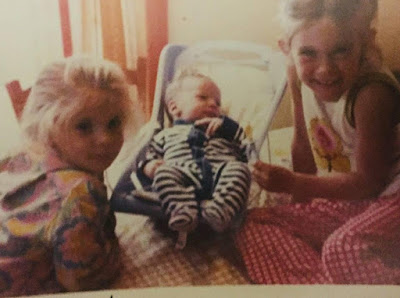I was inspired by a podcast called The 500 hosted by Los Angeles-based comedian Josh Adam Meyers. His goal, and mine, is to explore Rolling Stone's 2012 edition of The 500 Greatest Albums of All Time.
Album # 385
Album Title: Love And Theft
Artist: Bob Dylan
Genre: Rock, Blues Rock, Americana
Recorded: Clinton Recording Studios, New York, New York
Released: September, 2001
My age at release: 35
How familiar was I with it before this week: Not at all
Song I am putting on my Spotify: Lonesome Day Blues
Released on September 11, 2001, Love And Theft is the 31st Studio release from folk-rock pioneer Bob Dylan, widely regarded as the greatest American songwriter of all time.
This is the second of eleven records that Dylan has on the 500 list. Last August, I wrote about his 1999 release, Time Out Of Mind. In that post, I talked about trying to understand the love that so many have for Bob Dylan's music. Admittedly, after a week and multiple listens I was starting to get "it" -- that intangible magic that diehard Dylan fans rave about. I wasn't fully converted, but my disposition has changed.
My inaugural listen to Love And Theft was approached with a positive mindset. As the first notes to the opening track, Tweedle Dee & Tweedle Dum, played, I thought: "I'm excited to hear this, I am probably going to like it."
In 2010, I read Sam Sheridan's book, The Fighter's Mind. In it, he tells the story of Joshua Waitzken, an American chess player and child prodigy, who at the age of 11, played Grandmaster Garry Kasparov.
 |
| Waitzken playing Kasparov (1988) |
 |
| Waitzken, seated, right, in the dojo at his school. |
Some showed clear signs of defeat. The hopeless situation from which they have recently departed had made them despondent. They felt as if their mental capacities, their gift, had reached its limit. They possessed a fixed mindset.
Conversely, some emerged rejuvenated. Their internalized acceptance of a growth mindset had energized them. Consequently, they remained positive and certain that, at a future opportunity, they would overcome the chess challenge.
Does it work?
The Growth Mindset theory is a bit more complicated than one might be led to believe. A 2018 meta-study from Michigan State University suggests that from an educational standpoint, "growth mindset interventions...don't work for students in most circumstances." This makes sense, some people have a proclivity for some skills, whereas others can struggle to master a skill regardless of encouragement. Obviously, there are individuals with clear cognitive advantages.
So, where does this leave me?
As an educator, I will continue to promote the positives of a growth mindset. It is not a panacea, but I believe that there is benefit for a student's social-emotional approach to life, especially when overcoming academic challenges. However, I also accept that some people have a "gift"
Bob Dylan is one of many artists who learned music by listening to it and experimenting on a guitar or a piano. He was never formally trained and has said that he always had "a knack" for learning instruments and writing songs. To him, music is a grand experiment. One might say, it came easier for him.
Love And Theft is a testament to his experimental approach. Dylan produced the record under the pseudonym Jack Frost, and gathered his band into a Manhattan studio for twelve days to record it.
Frequently, he abandoned the initial arrangement of a song and made suggestions he thought would fit better. Recording engineer Chris Shaw has shared the following:
“Sometimes, Bob would just stop a song and say, 'Let’s do it in F and drop the tempo down. Play it like a Western swing tune... and I want the drummer to play brushes, not sticks.' Suddenly the song was completely different. Nothing was set in stone until he found that key, tempo and style that fit that vocal and that lyric.”
I approached Love And Theft with a positive mindset and it worked. I suppose you could say that Bob Dylan has become a chess match of sorts for me. Mark my words, by the end of this 500 record journey, I will be a Bob Dylan fan.



































